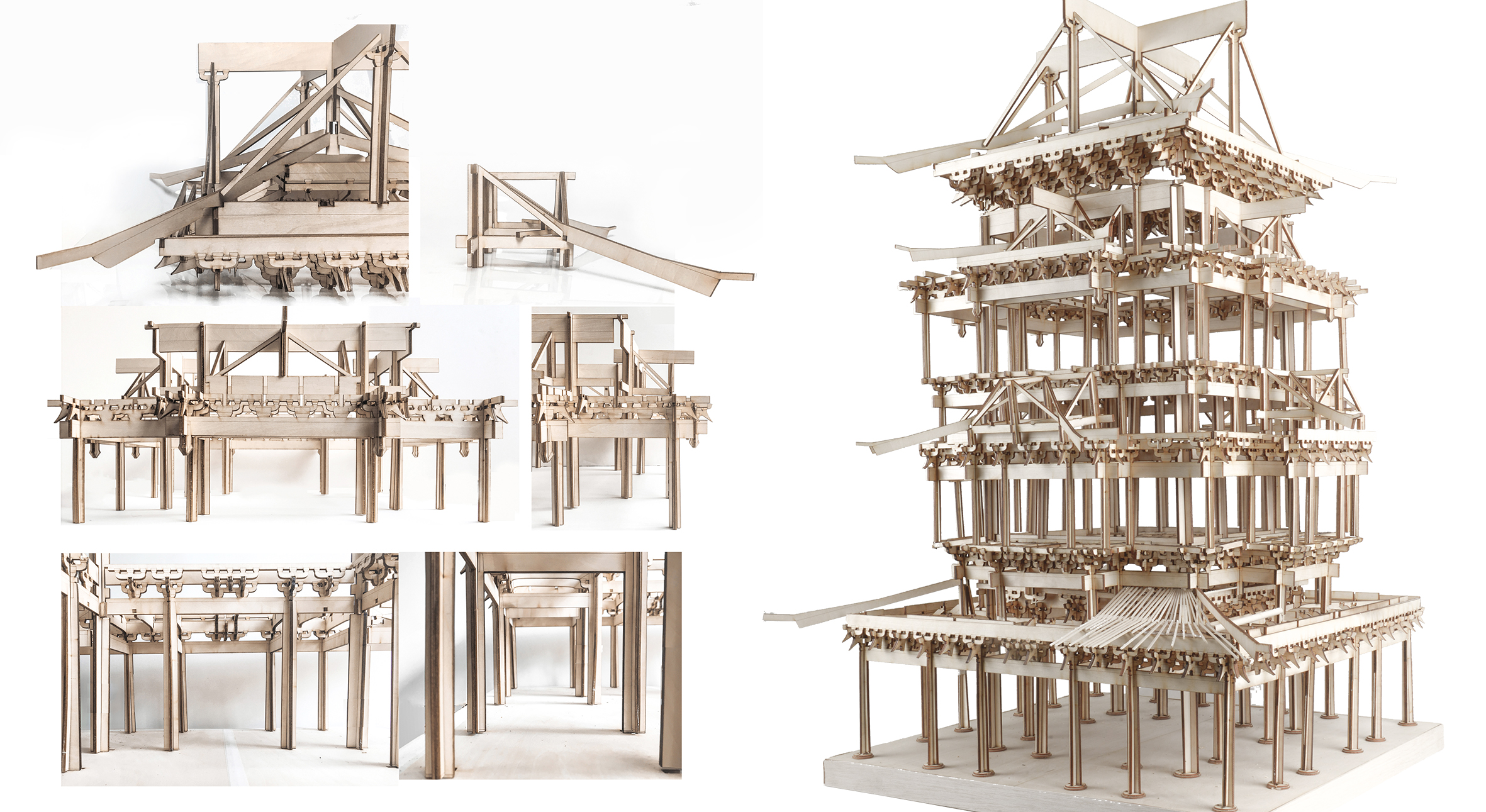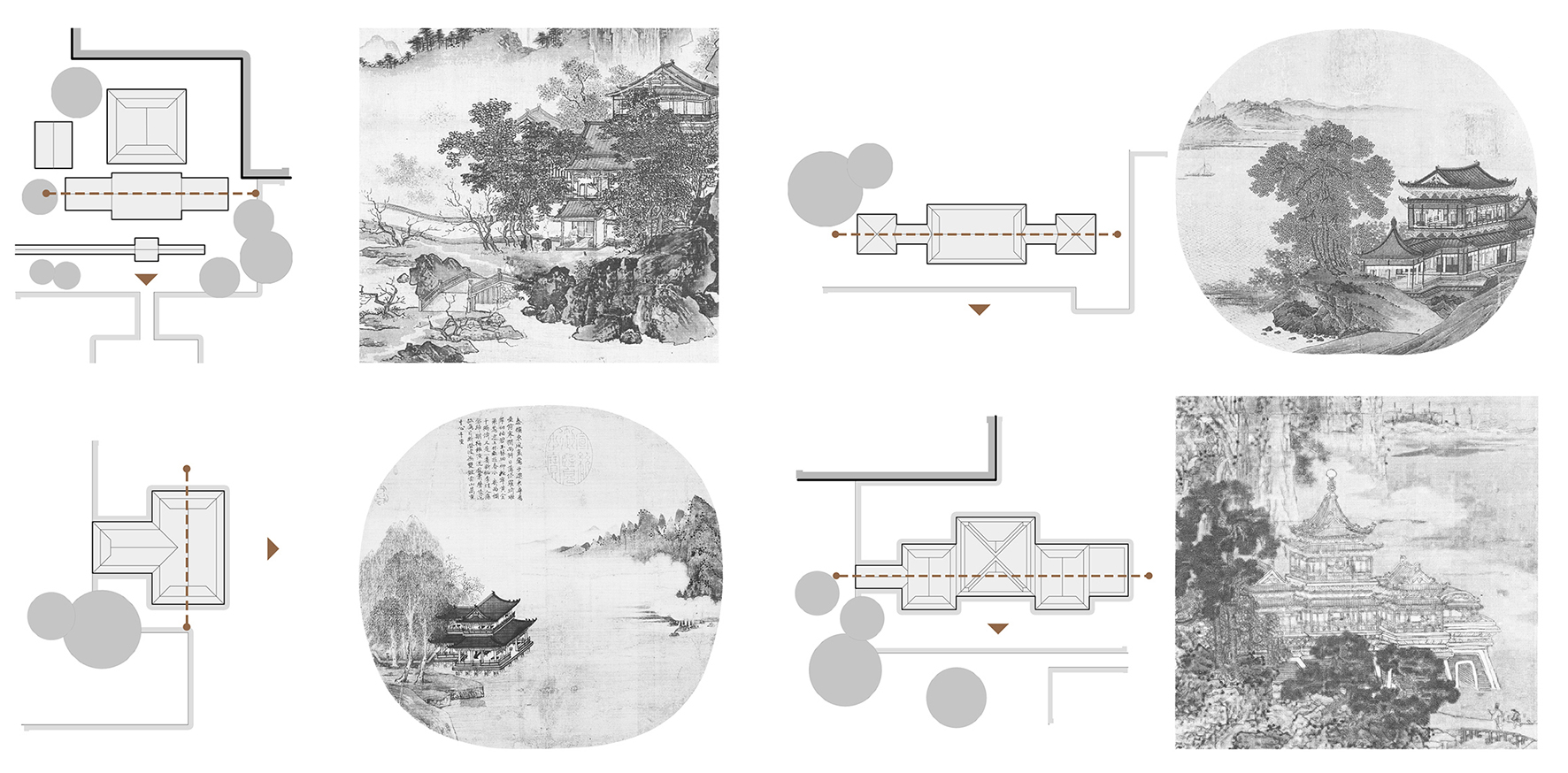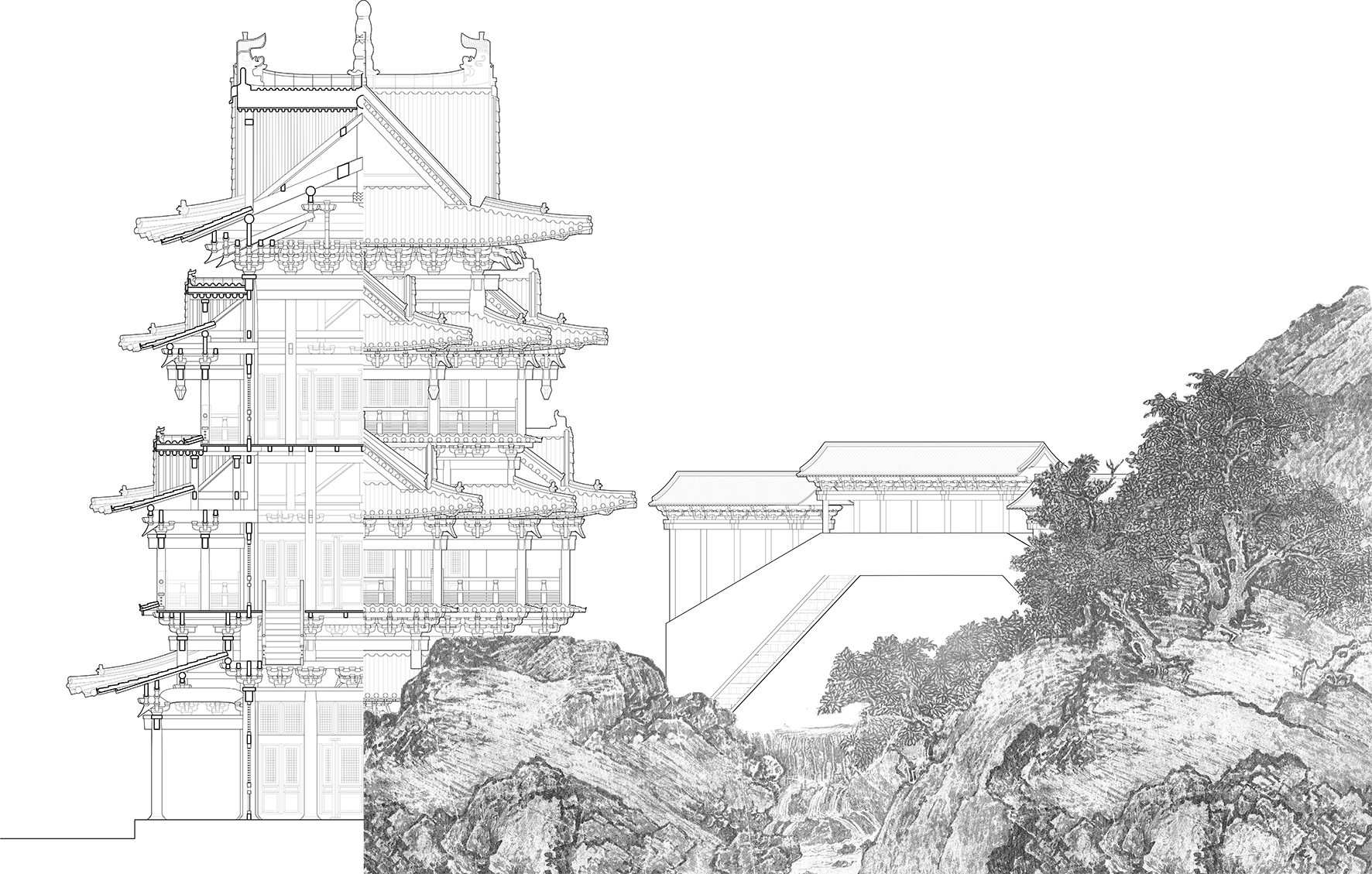Ancient Construction
Ancient Chinese Timberwork Design: Northern Song Building Construction in Yixing Suburbs
Tutor: Shi Hu, Tingli Jia Bachelor Studio Work, 2017, Southeast University
This project delved into the architectural nuances of ancient Chinese timberwork, focusing on the construction techniques used during the Northern Song Dynasty. The study commenced with a detailed site analysis, incorporating traditional elements such as painting scrolls and poetic routes to define building placements that harmonize with the landscape and terrain.

Part I: Analytical Foundation
Site Analysis and Route in the Poetry: Emphasized the integration of natural elements within architectural planning, utilizing classical literature to enhance the spatial arrangement and contextual relevance. Building Placement and Landscape Considerations: Determined optimal building orientations based on terrain analysis, promoting sustainable interaction between architecture and its natural surroundings.
Part II: Design and Construction
Construction Design and Module & Motif Development: Focused on the modular construction principles characteristic of the era, applying these to modern interpretations of timber architecture. Case Study: Flying Cloud House: Analyzed the Flying Cloud Tower at Dongyue Temple, revealing the structural elegance and symbolic intricacies of Ming Dynasty pavilions. The design features like ‘hui’ and ‘sub’ floor plans were explored in depth to understand their architectural significance and functionality.

Modeling and Material Analysis
A meticulous 1:50 scale model highlighted the construction sequence and traditional joinery techniques, avoiding modern interventions like glue to stay true to historical methods. This model served not only as a visual representation but as a tool to engage deeply with historical construction practices, enhancing understanding of the architectural principles used in large-scale timber structures.

Integration with Water and Terrain
The project explored the dynamic interaction between architecture and its surrounding elements—water and mountains—demonstrating how ancient builders made strategic use of natural landscapes to enhance the aesthetic and functional aspects of architectural designs. The study emphasized the relationship between water-facing structures and their capacity to integrate with the flow of natural landscapes, a principle that remains relevant in contemporary sustainable architecture.
 This research not only underscored the technical prowess of ancient Chinese architects but also enriched the academic dialogue surrounding sustainable practices in historical context. By revisiting these ancient techniques through a modern academic lens, the project contributed to broader discussions on heritage conservation and the application of historical insights in current architectural practices, aligning with the focus of advanced architectural and urban studies programs.
This research not only underscored the technical prowess of ancient Chinese architects but also enriched the academic dialogue surrounding sustainable practices in historical context. By revisiting these ancient techniques through a modern academic lens, the project contributed to broader discussions on heritage conservation and the application of historical insights in current architectural practices, aligning with the focus of advanced architectural and urban studies programs.
